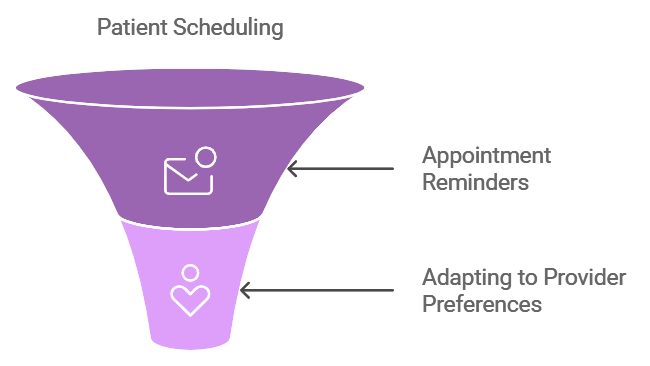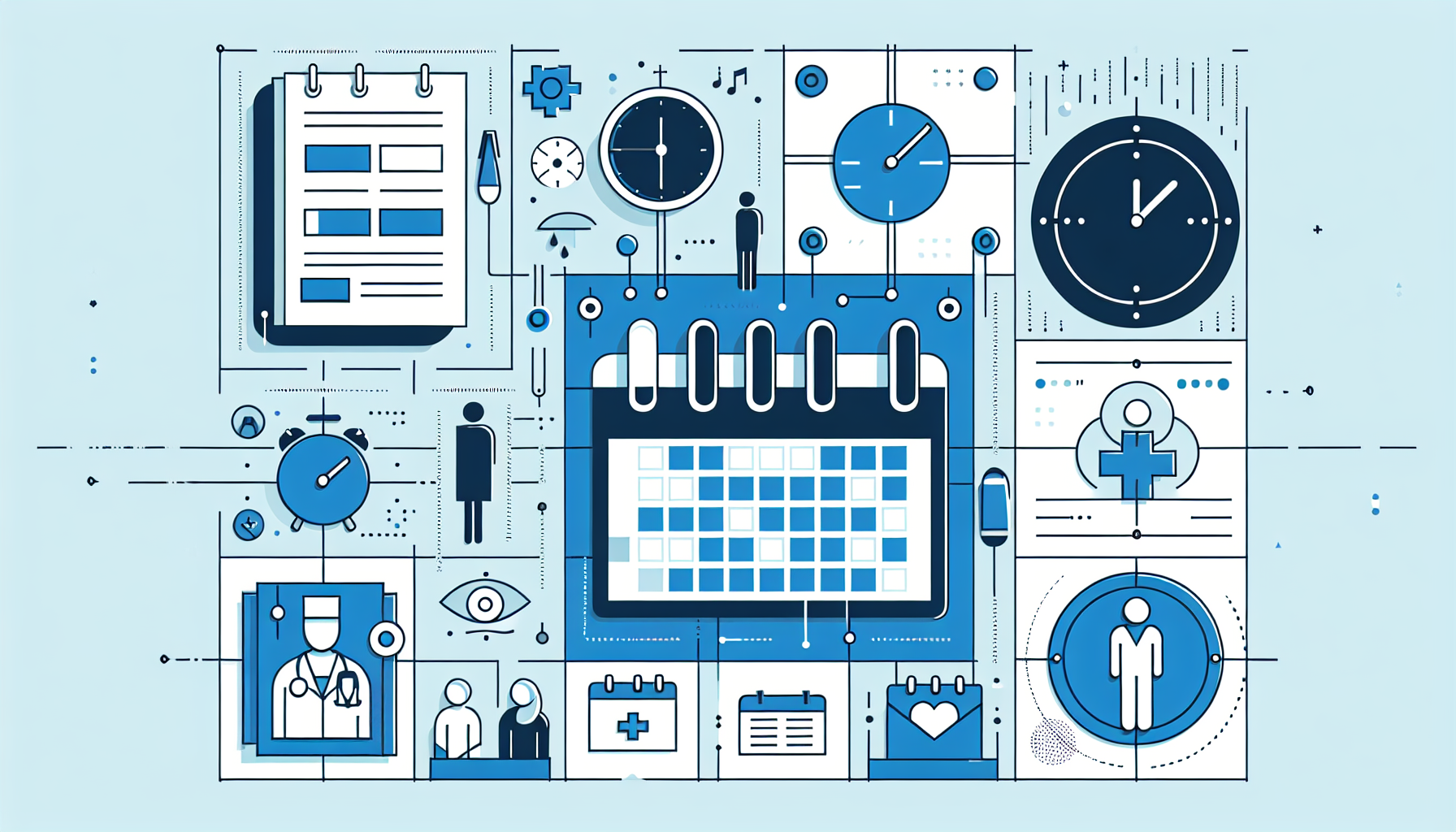Patient Scheduling Best Practices
Efficient scheduling in the clinic is a real game-changer, playing a significant role in how smoothly things run every day. If you want to become a scheduling whiz, understanding why smart planning matters and dealing with those no-shows is your ticket to success.
Why Smart Scheduling Matters
Scheduling is about more than just filling every slot on a calendar until it bursts! It’s like the secret sauce that makes everything better: keeping patients happy, cutting down on wait times, getting urgent cases sorted first, and using your resources smartly. When clinics nail the scheduling game, they’re smoother and leave patients smiling and operations on point.
Good scheduling gets patients seen quickly, zapping those dreaded long wait times and treatment queues. It also helps clinics juggle their resources super well, boosting productivity and providing top-notch care. Using practice management software for appointments makes things even slicker by automating bookings and lightening the admin load (Practice Management Software).
Dealing with No-Shows
No-shows can throw a wrench, messing with clinic flow and wasting time and resources. But guess what? Web-based scheduling can help nip no-shows in the bud, which is excellent news for everyone involved.
Web-based systems work like a charm, slashing no-show rates to as low as 1%, way better than the 8% you might see with old-school methods (PubMed Central). Lower no-shows aren’t just good for clinic vibes; they mean resources get used where they’re needed.
Tackling no-shows head-on, tools like Zoom Scheduler offer personal touches like custom confirmations and reminders. These perks cut down on missed appointments by shooting off email or text reminders, keeping patients in the loop and ready to roll for their visits.
By mastering effective scheduling and solving the no-show problem, clinic managers and admins can give patients a front-row seat, dial-up satisfaction, and keep the clinic running like a well-oiled machine.
Strategies for Optimal Patient Scheduling

Running a clinic efficiently isn’t just about medical treatment—it’s about having smart ways to manage appointments, too. Here are a couple of tips: remind folks about their appointments and keep the doctors happy!
Appointment Reminders
Sending out a quick text or email reminder could be the secret sauce for cutting down on those annoying no-shows at the clinic. Most of us need a nudge now and then. Clinics can hit their patients with reminders and scoop up some last-minute slots if someone cancels. By flipping on automated reminders, clinics can ensure everyone who’s meant to be there shows up, saving time and keeping things on track.
Adapting to Provider Preferences
Now, let’s talk about the folks with the stethoscopes. They’ve got their groove regarding appointments—how long they like them, when they’re free, all that jazz. Knowing what makes them tick and adjusting the schedule can make a difference. It keeps doctors happy and keeps the wheels turning smoothly. Toss in fancy tech like electronic health records (EHRs) to keep track of who’s where and when—and poof!—no more double-booked nightmares.
When you combine these two tips—sending reminders and tweaking doctors’ schedules—you end up with a clinic that runs like a well-oiled machine. There is less waiting around, fewer hiccups, and a bunch of happy patients and doctors.
Making Scheduling a Breeze with Technology
In the world of clinic operations, workflow optimization, and patient scheduling, technology is like that reliable friend who makes things easier and everyone more confident. The two big game-changers in making patient scheduling a walk in the park are electronic Health Record (EHR) systems and Automated Waiting Lists.
Why EHR Systems Are Awesome
Electronic Health Record (EHR) systems have flipped the script on patient scheduling. They give you the scoop on when doctors are free and all the details about patients right when you need them. By having this at your fingertips, clinics can dodge the mess of double bookings and scheduling mishaps, making the whole operation run smoother than a greased wheel (DemandHub).
EHR systems also make for a chummy link between healthcare providers, ensuring everyone’s in sync with appointments. There is less chance of goofs or crossed wires, and they centralize patient data, making planning as easy as pie.
Plus, EHR systems generate detailed reports and number-crunching tools, helping clinic managers spot hiccups and fine-tune procedures to provide the best care without the drama of patient problems.
Automated Waiting Lists: The Secret Weapon
Meet the Automated Waiting List, a tech tool that really spices up how patients get penciled in for appointments. This system sends messages to patients when a spot opens up, putting every minute of healthcare providers to good use and significantly reducing wait times. It’s a relief for both patients and staff, lightening the load and ensuring a smoother operation.
Ditch the headaches of jotting things down by hand with an Automated Waiting List, which keeps patients in the loop with updates on the dot. Keeping waitlists lively and on the ball not only boosts patient access and cheer but also lightens the load on clinic staff.
Once clinics roll out these automated lists, watch them work magic on how appointments are handled, revving how smoothly everything runs. It’s like turning the ‘current-day hustle’ of healthcare into a chill and efficient search-and-rescue mission for patients and providers.
Enhancing Patient Access and Satisfaction

In the busy world of clinic operations, it’s a big deal to ensure patients can quickly get care and leave happy. Two things that help are letting patients schedule their appointments and organizing appointment times based on who needs care the most.
Putting Self-Scheduling to Work
Imagine being able to set up your own doctor’s appointment, just like booking a movie ticket. This is what self-scheduling does, and it’s an excellent way for clinics to manage appointments. It puts patients in control—no more waiting on hold or working around someone else’s schedule. You choose the time that works for you, and it’s done. This not only boosts how patients feel about their care, but it also helps clinics pull in more new patients. Plus, current patients save time, which keeps them coming back happy and satisfied.
Web-based scheduling platforms mean patients can pick a slot whenever they feel like it, whether it’s lunch break or late at night. Fewer phone calls, more open access, and everyone’s happy. It’s not just suitable for patients; clinics can breathe easily, too. Less pressure on the folks sorting out appointments means staff can focus on actual human stuff. And with fewer no-shows, everyone’s schedules stay on track (PubMed Central).
Sorting Out Appointments
Ever need to see a doctor ASAP but couldn’t get in for weeks? Prioritizing who gets in first based on urgency makes a world of difference. It’s like triage in an ER, but for making sure you’re not waiting forever to get seen. Clinics can use their time and resources smartly, making sure folks in serious need aren’t stuck waiting.
An automated waiting list can be a lifesaver here. Imagine being bumped up to an earlier slot with just a quick text. This keeps the healthcare wolves at bay—patients aren’t stuck guessing when they’ll get in, and healthcare workers aren’t wasting time. It’s smooth sailing for everyone.
By setting up self-scheduling and sorting appointments by who needs them most, clinics can run like a well-oiled machine: fewer gaps, shorter waits, and patients walking out with a smile. When clinics run smoothly, everyone benefits—patients get the care they need when they need it, and clinics can manage their resources like pros.
An optimal patient scheduling system is your gateway to enhanced efficiency, improved patient satisfaction, and streamlined practice operations. Master the art of scheduling today. Elevate Your Scheduling Game! Contact Karma Health for expert solutions tailored to transform your patient scheduling into a seamless and productive process. For more details contact us today.




